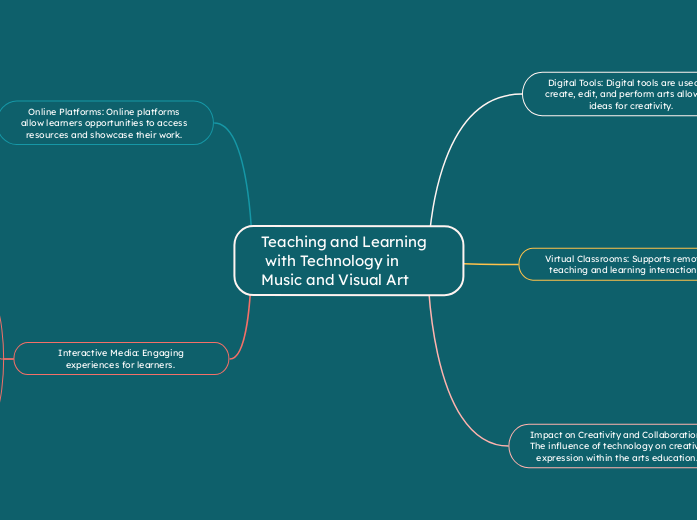Teaching and Learning
with Technology in Music and Visual Art

Teaching and Learning
with Technology in Music and Visual Art
Interactive Media: Engaging experiences for learners.
Virtual Reality: Headsets that offer virtual galleries and experiences.
Music Apps: Game based learning.
Augmented Reality: This is tools that overlay digital content onto the real world, used in visual art education.
Online Platforms: Online platforms allow learners opportunities to access resources and showcase their work.
Streaming Services such as YouTube and Spotify.
Artist Communities: Devian Art and SoundCloud allow artist to share their work and feedback.
MOOCs: Massive Open Online Courses offer access to music and art education.
Impact on Creativity and Collaboration: The influence of technology on creative expression within the arts education.
Creative Coding and Global collaboration.
Collaborative Platforms such as google drive.
Virtual Classrooms: Supports remote teaching and learning interactions.
Interactive whiteboards for allowing visual demonstrations.
LMS Integration: Learning management systems such as canvas.
Video Conferencing: Zoom can be used to have live art or music lessons.
Digital Tools: Digital tools are used to create, edit, and perform arts allowing ideas for creativity.
Virtual Instruments
Graphic Design Software: Adobe Photoshop and Illustrator
Music Software: Garage band and Ableton live allow music production on computers.

